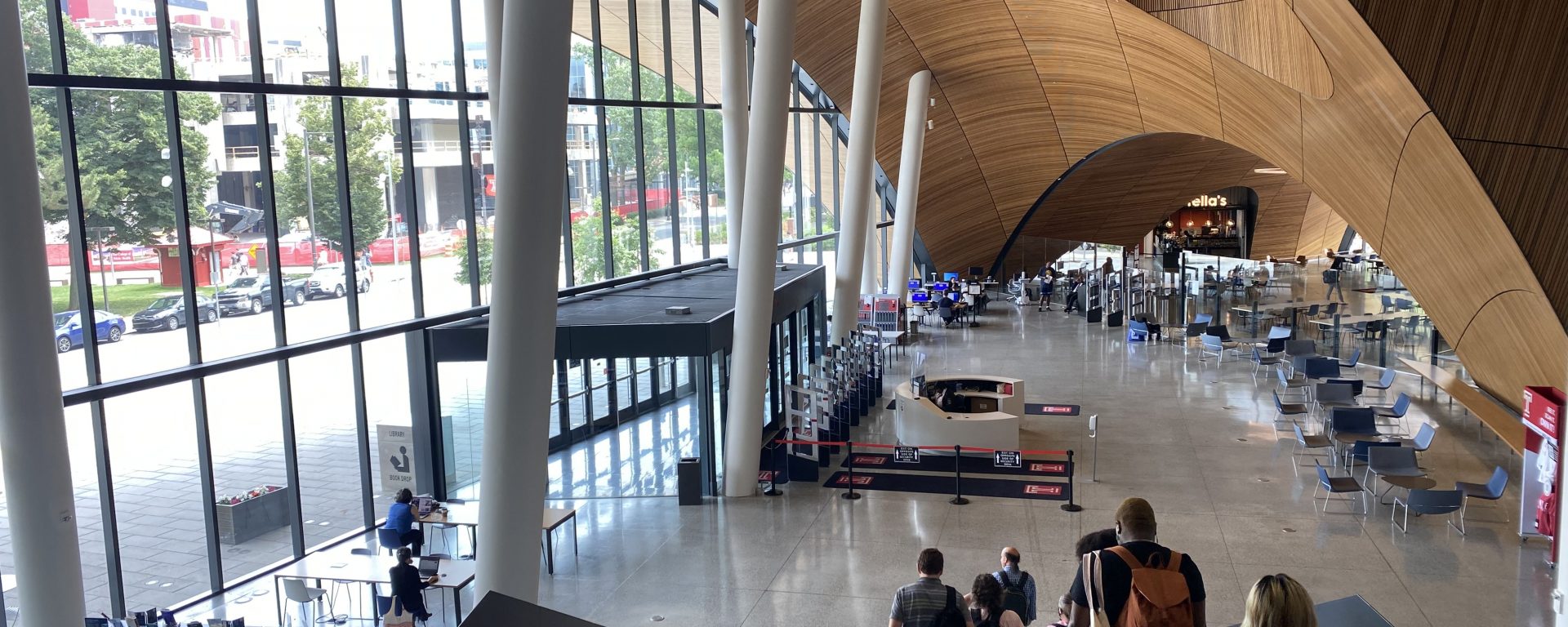On June 20th, 2023, the Accessibility@Swarthmore—including the summer student workers—visited Temple University’s Charles Library. We learned about the various Assistive Technology (AT) initiatives situated throughout the campus. Let’s take a look at how technology is assisting learning at Temple University.
TechOWL: Technology for Our Whole Lives
Our first stop was TechOWL—short for Technology for Our Whole Lives. As Pennsylvania’s designated Assistive Technology Act Program (ATAP), TechOWL works with people with disabilities to help them explore and find assistive technology that best suits their needs. I was surprised to learn that each state has a designated Assistive Technology Act Program similar to TechOWL (there are 56 in total).
At TechOWL, we learned a lot about the services they offer, including:
- helping people borrow and acquire assistive technology devices;
- providing consultation;
- and training community members on assistive technology.
As someone very new to accessibility and assistive technology, I really enjoyed hearing about the experience of people who have been in the field for a long time.
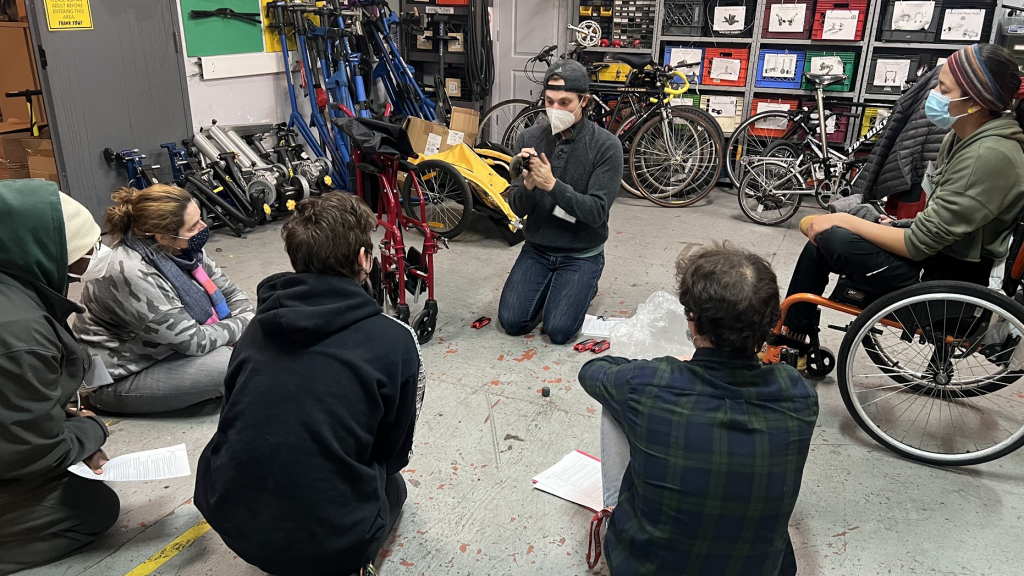
Charles Library: A center of learning for the community
After lunch, we visited Temple’s Charles Library. I immediately noticed how bright and spacious it was. With the open floor plan, large windows, and concave wooden walls, the space felt very welcoming. In fact, we later learned that the library welcomes the public.
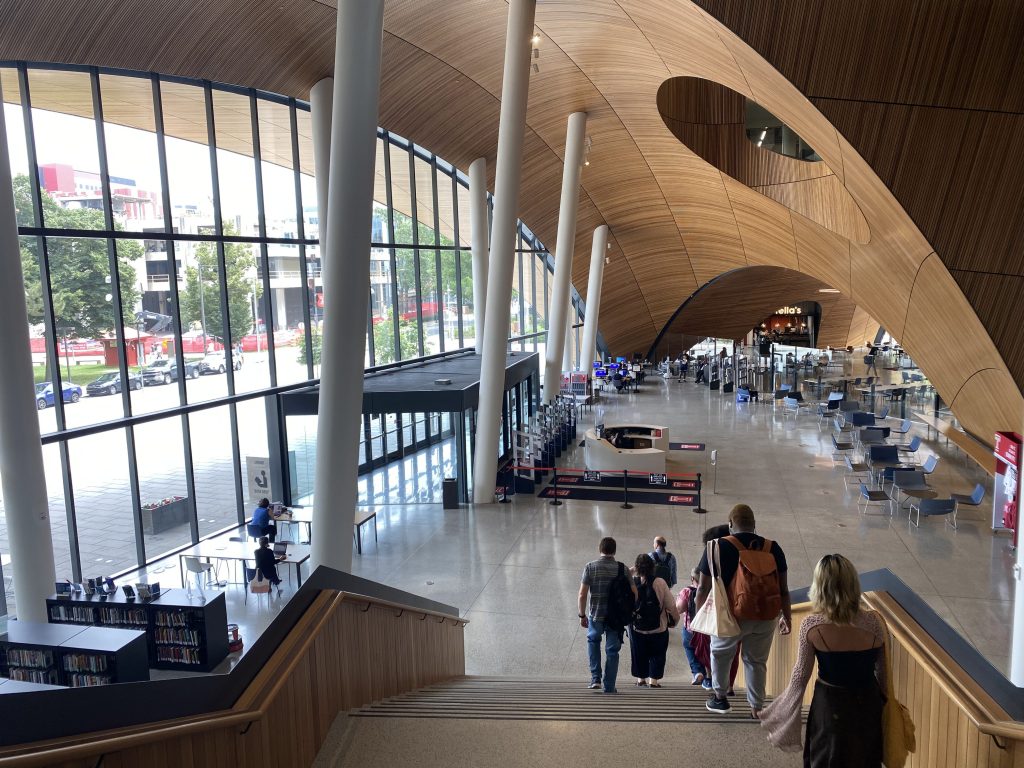
After looking around the first floor, where a small cafe and a 24-hour study space were located, we went upstairs. There were all kinds of student facilities, ranging from large study rooms with multiple screens to individual study pods (a big hit among the team members) to self-service laptop and battery checkout stations.

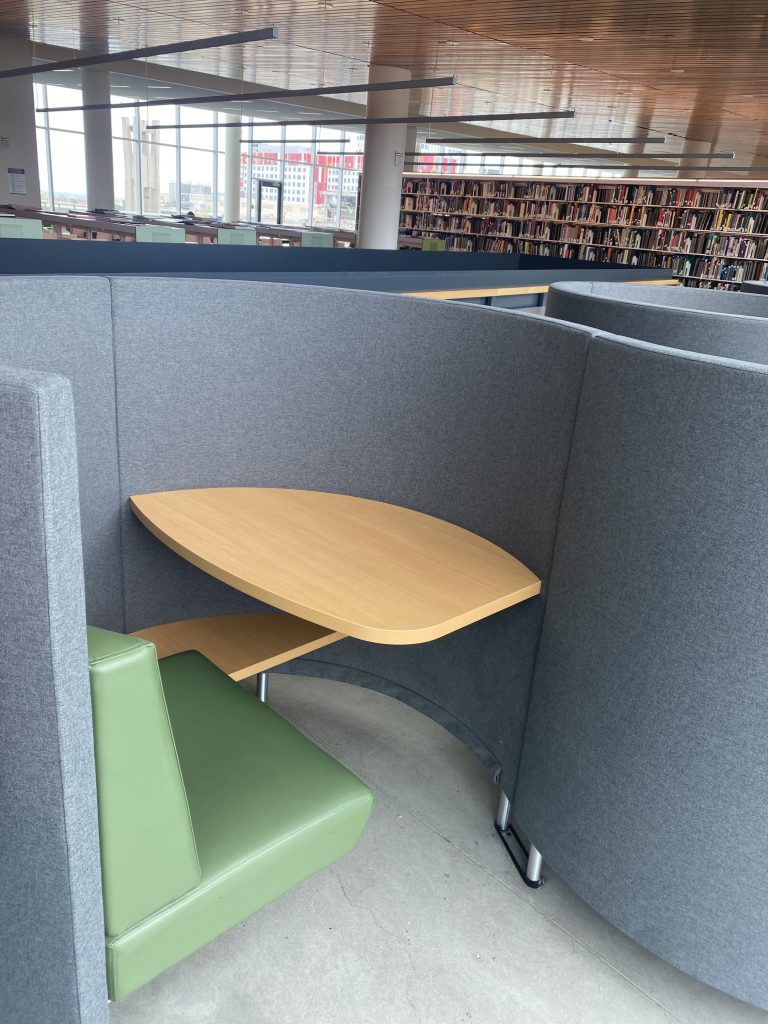
My personal favorite was the automated book storage and retrieval system called the BookBot. I have never seen anything like this—you don’t have to go find a book on a bookshelf; simply press the request button, and BookBot will bring it to you! How cool is that?
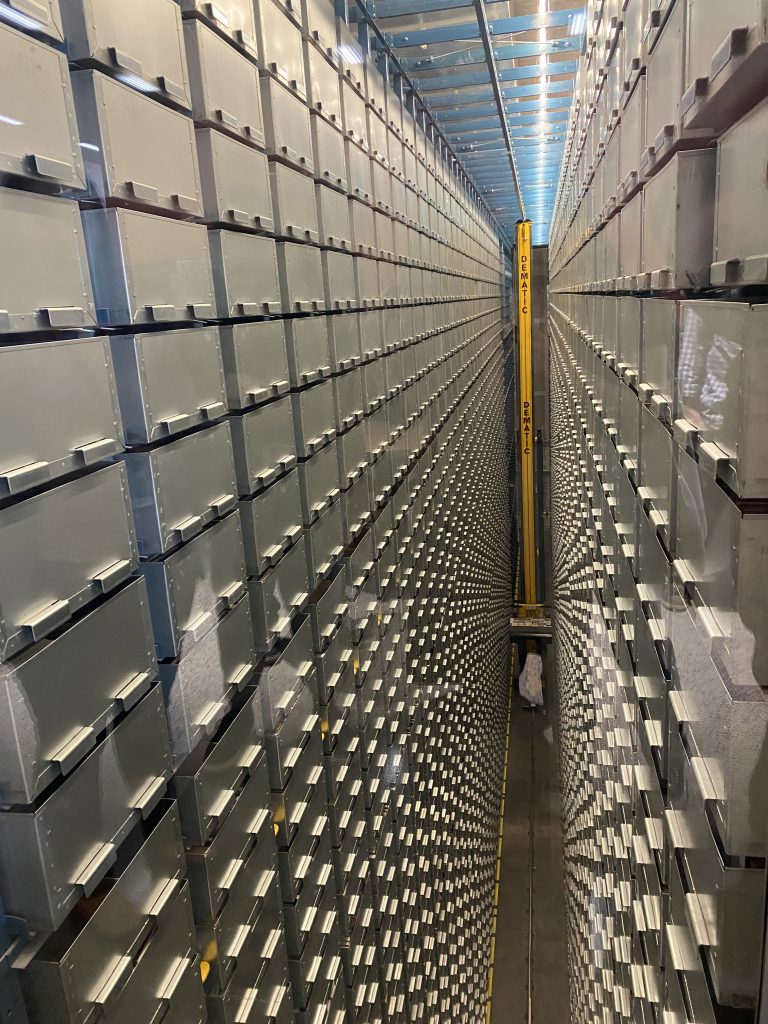
LCD Scholars Studio Makerspace
Additionally, we checked out the Loretta C. Duckworth Scholars Studio Makerspace located inside the library. I have not used the MakerSpace during my time at Swarthmore; however, it was very interesting to learn what students are working on and to see 3D printers in action. Unfortunately, I could not figure out what the printer was creating despite staring at it for two minutes. One of the staff explained that in addition to providing technical equipment and support to students, the Makerspace sponsors an Innovative Teaching grant—in collaboration with the Center for the Advancement of Teaching—that empowers faculty to build a more engaging learning experience for students.
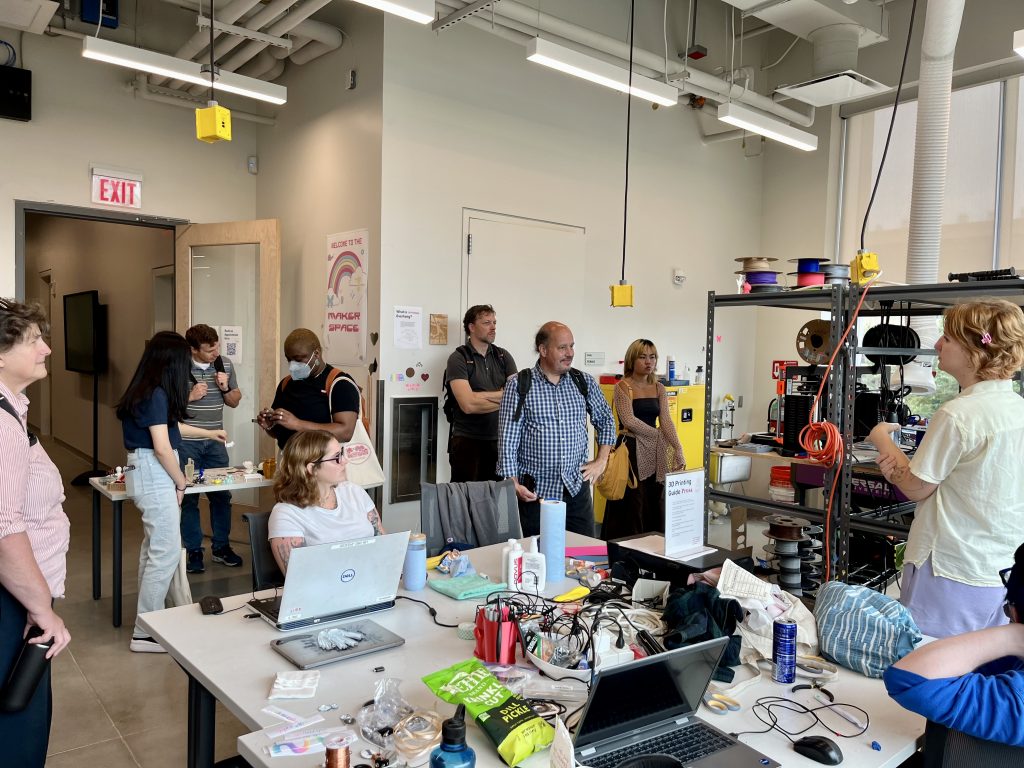
Virtual Reality Studio
Charles Library houses another interesting space—the Virtual Reality (VR) studio. We learned about some ways VR can be used for purposes other than simple entertainment. One that stood out to me was “empathy training,” where students get to experience certain situations—for example, homelessness or physical impairment—through first-person simulations. At Temple, professors and staff are incorporating VR into social work and nursing education, helping students gain insight into the struggles and hardships people are going through.
As a matter of fact, Swarthmore is beginning it’s Immersive Realities Initiative. Reach out if you’re interested!
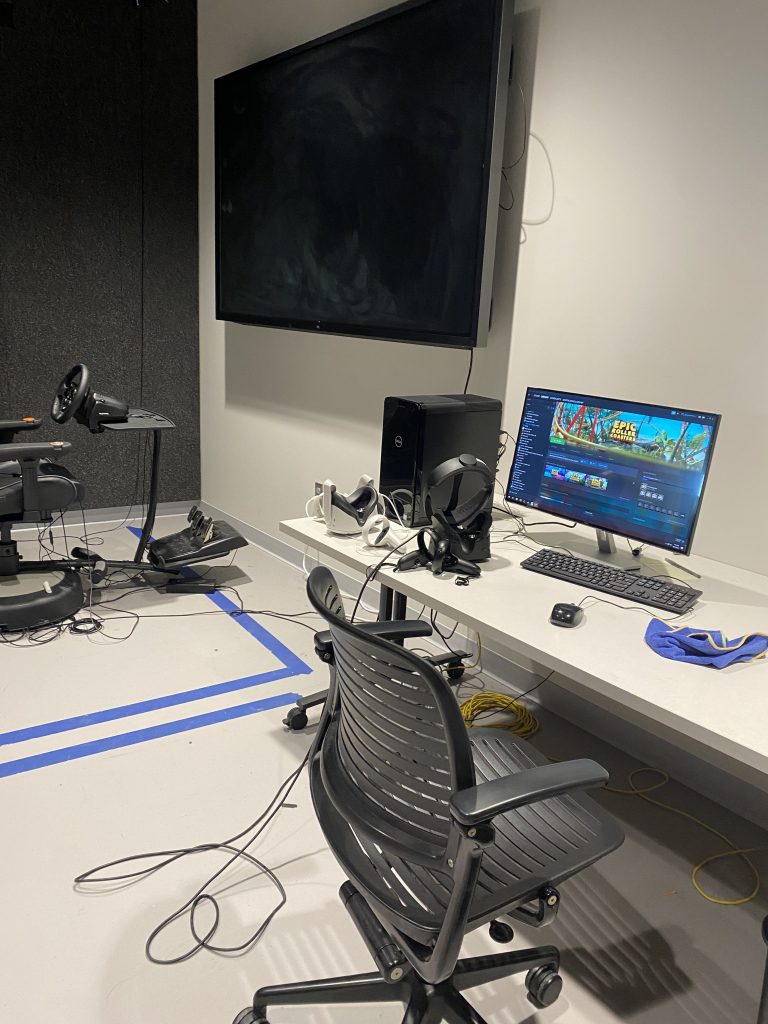
One-Stop Assistance Desk
Coming back to the first floor, we visited the One-Stop Assistance Desk.
What I found most interesting was a communication device named “UbiDuo2.” The UbiDuo2 facilitates face-to-face communication between people who may feel more comfortable using text-based communication methods—including people with disabilities. For this purpose, UbiDuo2 consists of two identical components. Each component has a keyboard and split screen that allows both users to participate in the conversation in real time without having to hit “Enter” or “Return”. I especially liked the fact that users do not have to move over to one side or stare at the screen while the other person is typing; I thought this device let users have a much more natural and flowing conversation.

We wrapped up our Temple visit by exploring studios inside the Tyler School of Art and Architecture.
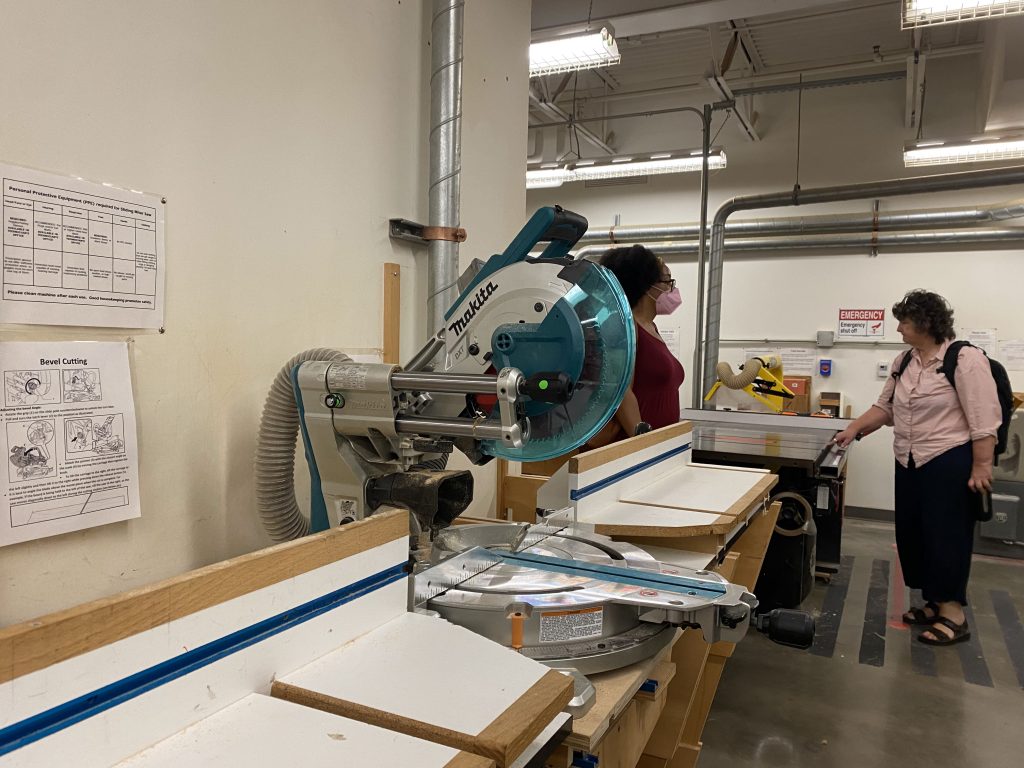
Overall, it was certainly a day to remember. I learned so much about so many different things in one day. It was really cool to watch the technologies in action and particularly to see how other schools are incorporating new technologies into their learning environments.

